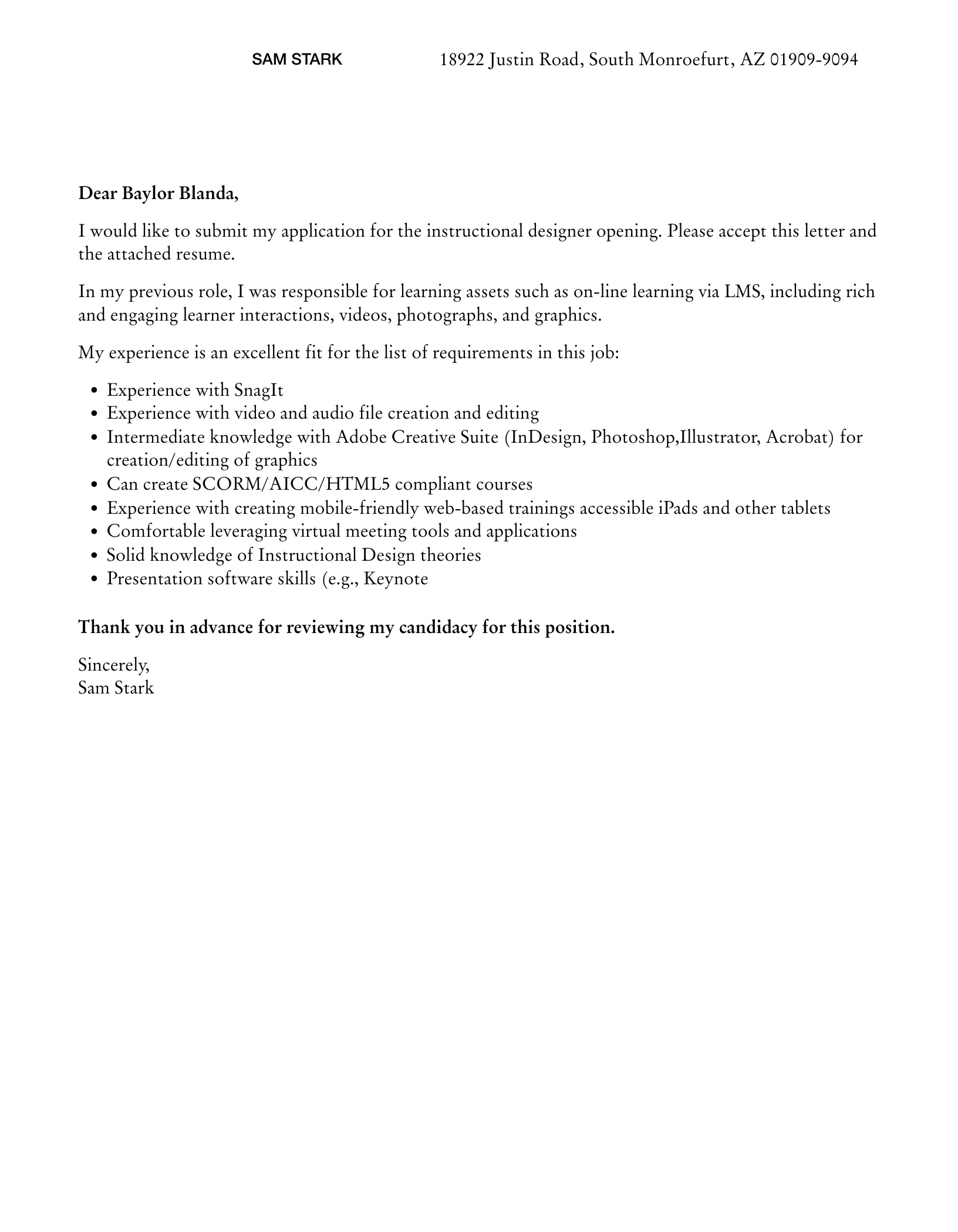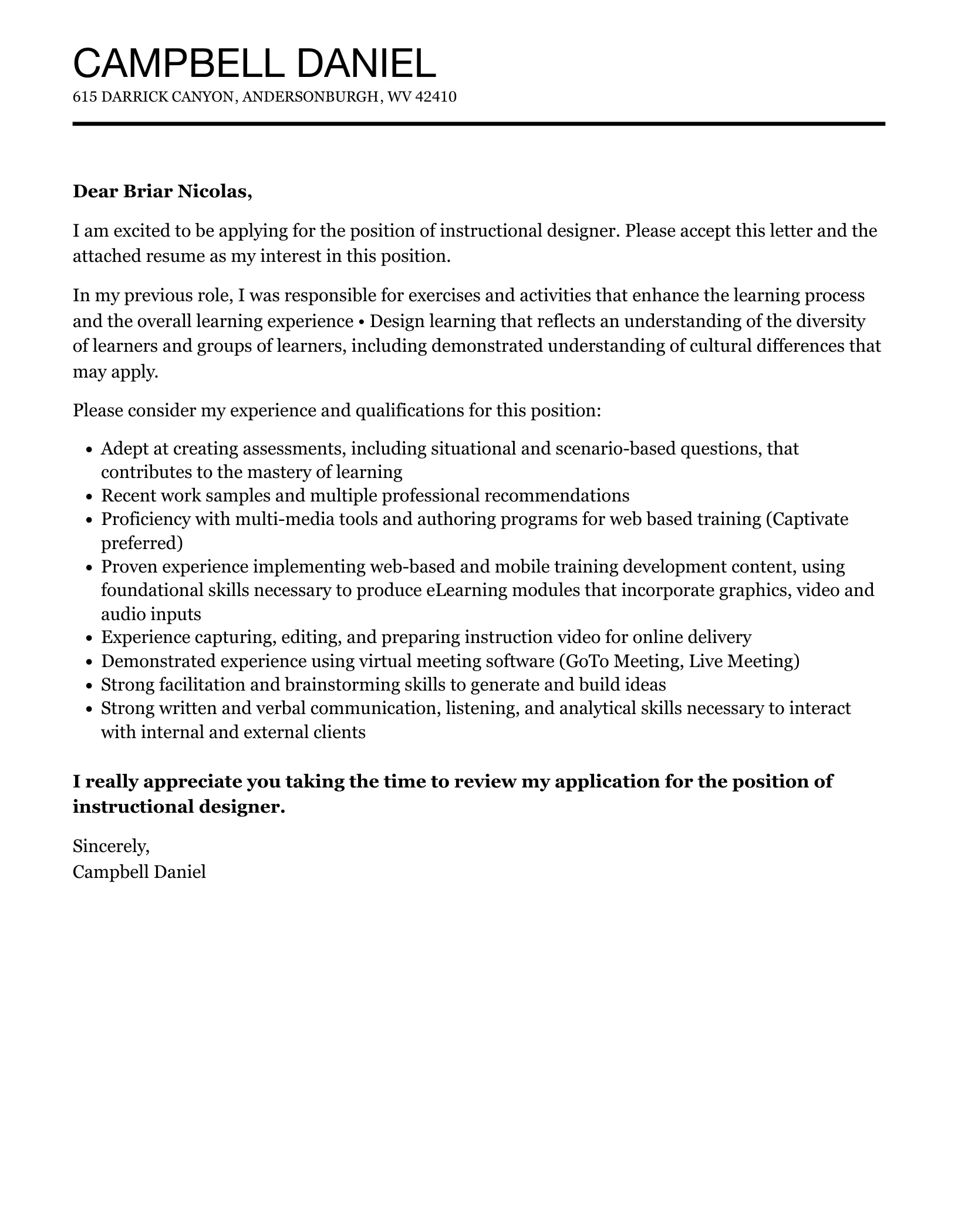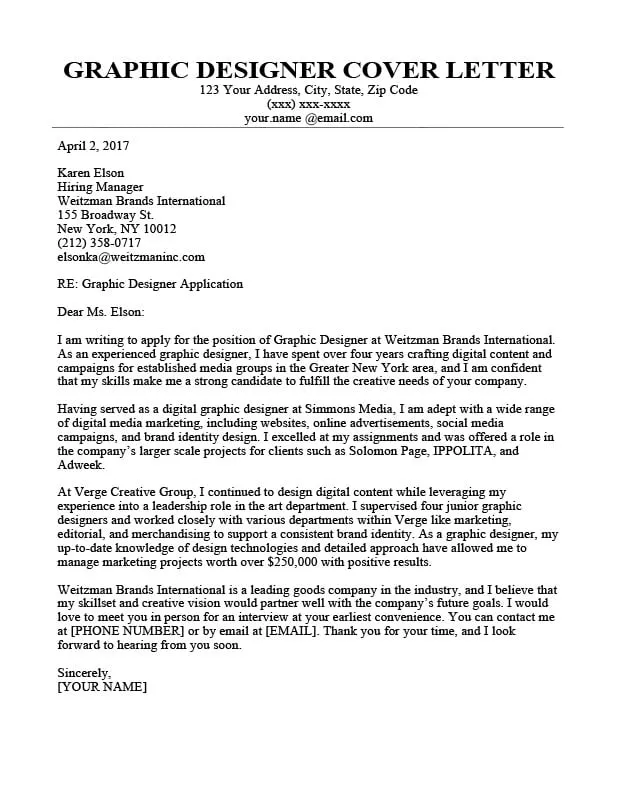Understand the Importance of a Cover Letter
In the competitive field of instructional design, a well-crafted cover letter is not just a formality it’s your first opportunity to make a lasting impression. Your resume provides a snapshot of your skills and experience, but your cover letter offers a chance to tell your story, demonstrating your passion for the role and how your qualifications align with the specific requirements of the job. It’s your chance to showcase your personality, your communication skills, and your understanding of the company and the position you’re applying for. A strong cover letter can significantly increase your chances of getting an interview, making it a critical component of your job application package. Ignoring it, or submitting a generic letter, is a missed opportunity to stand out from the crowd. Take the time to carefully construct a cover letter that reflects your best self and highlights your potential to contribute to the organization. Remember that it is often the cover letter that sets the tone for the rest of the application and can be the determining factor in securing an interview. Use this to your advantage and treat it as the important first impression that it is.
Key Components of an Instructional Designer Cover Letter
A compelling cover letter for an instructional designer should include several key components. Start with a professional heading that includes your contact information and the date. Then, address the hiring manager by name if possible; personalized greetings show you’ve done your research. In the opening paragraph, clearly state the position you’re applying for and where you found the job posting. Briefly mention why you are interested in the role and the company. The body of your letter should highlight your relevant skills and experience, providing specific examples of your accomplishments. Quantify your achievements whenever possible, such as the number of training programs you’ve developed or the percentage increase in learner engagement. Demonstrate your understanding of instructional design principles and your ability to apply them effectively. Include a call to action in your closing paragraph, expressing your enthusiasm for the opportunity and a willingness to discuss your qualifications further. Finally, proofread your letter carefully for any grammatical errors or typos. These details are crucial for demonstrating your professionalism and attention to detail, which are very important in an instructional design role.
Highlighting Your Instructional Design Skills

When crafting your cover letter, focus on showcasing your instructional design skills. Mention your proficiency in various instructional design models, such as ADDIE, SAM, or Bloom’s Taxonomy, and how you have applied them to develop effective training materials. Describe your experience with different learning management systems (LMS) and authoring tools, such as Articulate Storyline, Adobe Captivate, or Lectora. Highlight your ability to conduct needs assessments, analyze learning objectives, and design engaging and interactive learning experiences. Demonstrate your skills in creating various types of training materials, including e-learning modules, instructor-led training sessions, and job aids. Emphasize your ability to incorporate multimedia elements, such as videos, simulations, and interactive quizzes, to enhance the learning experience. It is important to show you have experience in different platforms. Moreover, illustrate your collaboration abilities, especially how you have worked with subject matter experts (SMEs) and other stakeholders to ensure the accuracy and relevance of your training programs. Furthermore, explain your approach to evaluating training effectiveness and making data-driven improvements.
Showcasing Your Relevant Experience
Your cover letter should provide specific examples of your relevant experience. Instead of simply listing your responsibilities, focus on your accomplishments and the impact you made in previous roles. Describe a project where you successfully designed and delivered a training program that met specific learning objectives. Highlight the challenges you faced, the solutions you implemented, and the results you achieved. Quantify your achievements whenever possible, such as the number of learners trained, the reduction in errors, or the improvement in performance metrics. Include details about the types of training programs you’ve developed, the target audience, and the delivery methods you’ve used. Showcase your ability to adapt your design approach to different learning environments and audiences. Explain how you have handled various project management tasks, such as creating timelines, managing budgets, and coordinating with stakeholders. Be sure to mention your experience with various industries or subject areas, if applicable. By demonstrating your experience through concrete examples, you provide evidence of your skills and make your cover letter more compelling and convincing to potential employers.
Tailoring Your Cover Letter to the Job
A generic cover letter will not impress hiring managers. It’s crucial to tailor each cover letter to the specific job you’re applying for. Carefully review the job description and identify the key skills, qualifications, and experience the employer is seeking. Use the job description as a guide to determine which of your skills and experiences are most relevant to the role. Customize your letter to address those specific requirements. Mention the company by name and demonstrate your knowledge of their products, services, or mission. Show that you’ve done your research and understand what the company is looking for in an instructional designer. Use keywords from the job description throughout your letter to highlight your qualifications. By tailoring your cover letter, you demonstrate your genuine interest in the position and show the hiring manager that you have taken the time to understand their needs. This targeted approach will increase your chances of getting noticed and securing an interview. Remember that the effort you put into customization is a clear indicator of your commitment to the opportunity.
Formatting and Tone for Success

The formatting and tone of your cover letter can significantly impact its effectiveness. Use a professional and easy-to-read font, such as Times New Roman, Arial, or Calibri, and keep the font size between 10 and 12 points. Use single-spaced paragraphs with a space between each paragraph to improve readability. Ensure that your letter is well-organized and clearly structured, with a clear introduction, body, and conclusion. Maintain a professional and enthusiastic tone throughout the letter. Avoid using overly casual language or slang. Use active voice and strong action verbs to describe your accomplishments. Show your passion for instructional design and your enthusiasm for the opportunity. Be positive and confident in your abilities, but avoid being arrogant or boastful. Proofread your letter carefully for any grammatical errors or typos. A well-formatted and professionally written cover letter will make a positive impression on the hiring manager and increase your chances of getting an interview. Pay close attention to details; it’s a reflection of your dedication.
Proofreading and Polishing Your Letter
Before submitting your cover letter, take the time to proofread and polish it. Errors can undermine your credibility and suggest a lack of attention to detail. Carefully review your letter for any grammatical errors, spelling mistakes, and typos. Use a spell checker and grammar checker, but also read the letter aloud to catch any errors that the software might miss. Ask a friend, family member, or career advisor to review your letter and provide feedback. They may be able to spot errors or suggest improvements that you have overlooked. Ensure that your letter is clear, concise, and well-organized. Check that the tone of your letter is appropriate for the job and the company. Make sure your contact information is accurate and up-to-date. A polished and error-free cover letter demonstrates your professionalism and attention to detail, increasing your chances of making a positive impression. Always prioritize accuracy and clarity, as it is very important.
In conclusion, crafting a powerful cover letter for an instructional designer position is essential for making a strong first impression and securing an interview. By understanding the key components of a cover letter, highlighting your relevant skills and experience, tailoring your letter to the job, and ensuring proper formatting and proofreading, you can significantly increase your chances of success. Remember to showcase your passion for instructional design, your understanding of instructional design principles, and your ability to create engaging and effective learning experiences. Put in the effort to craft a compelling cover letter that reflects your best self, and take the next step in your instructional design career.
